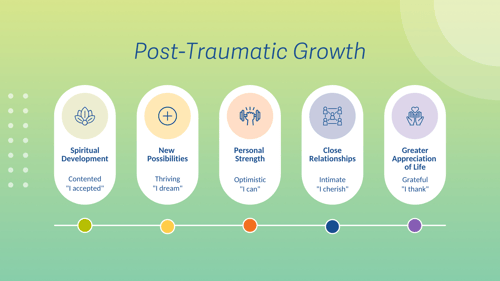There has been no shortage of stress in our lives lately. Over the past year, nearly 20% of physicians reported inappropriate feelings of anger, tearfulness or anxiety on a weekly or daily basis because of COVID-191.The impact of COVID- 19 on the medical field has brought:
- Staffing shortages
- Increased complexity of care
- High-risk exposure to pathogens
- Uncertainty and constantly changing landscape
- Strained relationships with patients
- Second Victim Syndrome
- Compassion Fatigue, Burnout and Moral Injury
For some, these difficulties have been traumatic. The trauma may be caused by one or more significant incidents that commonly lead to emotional or psychological duress, and for others the accumulated impact of these incidents. Experiencing trauma can lead to mental health issues such as post-traumatic stress disorder (PTSD), depression, anxiety, alcohol and drug use, as well as impacting their relationships at work and home. Some have been led to consider a career change as a way to avoid the difficult feelings associated with practice.
At VITAL WorkLife, we’ve seen clinicians bringing a much greater focus on broader family concerns, in addition to a desire for improved job satisfaction. There are effective treatments and strategies available for trauma recovery, and we are available to support clinicians in getting the help they need. Beyond that, some clinicians are beginning to see opportunities for growth through this adversity, and are reflecting on some of the positive coping skills they developed or utilized during the most challenging times. Many clinicians have noted the pandemic almost forced them into taking greater measures to maintain well-being (measures that had been missing for some even before the pandemic). Examples include setting more limits and boundaries on time and energy, practicing self care, developing or reclaiming hobbies, and most importantly fostering connections with others.
Post-Traumatic Growth
Post-traumatic growth (PTG) is a theory that explains a kind of positive change after living through trauma. It was developed by psychologists Richard Tedeschi, PhD, and Lawrence Calhoun, PhD, in the mid-1990s, and holds that those who endure psychological struggle following adversity can actually see positive growth afterward2. For many people who have survived a trauma they find positive changes such as a new appreciation for life, a newfound sense of personal strength and a new focus on helping others.
Visualizing What Post-Traumatic Growth Can Look Like

You may be thinking, I don’t know if that growth or positivity is possible right now and it may not be for you, which is okay. However, even just starting to look for growth potential in even one of the areas listed here can bring about change. In a study of frontline healthcare workers, they did find large percentages of workers who noted post-traumatic growth along one of these five options: appreciation of life, relating to others, and recognizing new personal strengths.
Pursuing the Concept of Post-Traumatic Growth
There is no simple formula to grieving, healing or even growing from experiencing trauma. The first step is building awareness of your emotions, which then can lead to a readiness to consider growth aspects, generally linked with a deeper look into meaning and purpose in one’s life. According to the Harvard Business Review, post-traumatic growth can often happen naturally, but it can be facilitated in five ways: through education, emotional regulation, disclosure, narrative development and service3. Reflect on how the past few years have manifested in your life–have you found positives out of the worst circumstances? Have you managed to find joy or a redefined sense of personal strength? Keeping the five areas of growth in mind, do new realizations come when re-evaluating your actions after a high-stress or traumatic event?
Wherever you are on your journey to addressing the stress, trauma and emotional impact of the pandemic, we’re here to help. We cover 33,000 physicians, 44,000 nurses and 100,000 healthcare employees, all on paths to nurturing their best selves through physician well-being.
We Can Help
VITAL WorkLife is here to support and guide you in your own growth to help find meaning and purpose. For coaching, counseling and other resources contact us at 877.731.3949, through the VITAL WorkLife App or contact us online.


